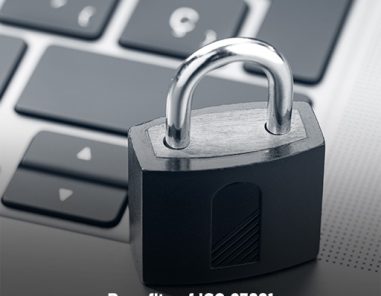
7 Benefits of ISO 27001 Certification
The ISO 27001 standard is an international, auditable and comprehensive stand...
Read MoreThe International Electrotechnical Commission (IEC) developed the ISO 27001 in partnership with the International Organization for Standardization (ISO). Both organisations are leading entities in developing international standards. They have joined forces to create ISO 27001 to manage information security. With the help of the ISO Council, you can get complete information about ISO 27001.

The ISO framework is an amalgamation of policies and processes for organisations.
The ISO 27001 provides a framework to help organisations of any sector or size protect their information systematically and cost-effectively.
This is done by adopting an information security management system (ISMS). The ISMS provides a centrally managed framework for organisations that enable them to manage, review, improve and store their information security practices in one place.
The ISO 27001 is important as it provides companies with the necessary knowledge to protect their most valuable information. Additionally, companies are granted certification when they comply with the recommendations outlined in ISO 27001. The ISO 27001 certification proves to an organisation’s customers and stakeholders that it safeguards their data.
Data security is a primary concern for many shareholders, and acquiring the ISO 27001 certification can enhance the brand credibility of an organisation.
Moreover, individuals can also get ISO 27001 certified by attending a training program and passing the examination, in a way, proving their skill sets to potential employers.
Hence, ISO27001 has worldwide recognition, increasing growth opportunities for organisations and professionals.

The goal of ISO 27001 is to protect three main aspects of information: confidentiality, integrity and availability. Enabling confidentiality allows only authorised individuals to have access to the appropriate information. Similarly, enabling integrity allows only authorised individuals to modify the data and availability allows information accessibility to be revoked to unauthorised individuals whenever necessary.
An information security management system (ISMS) comprises a set of regulations that organisations can use to determine stakeholders’ expectations regarding information security. The ISMS helps organisations identify risks for their information and, consequently, define controls. Controls are safeguarding methods that help to mitigate risks related to the identified expectations.
The ISMS also allows organisations to set clear objectives on what needs to be achieved with information security, implementing all controls and risk treatment methods. Controls help monitor the ISMS’s effectiveness, allowing for adjustments when required.
There are four essential benefits that an organisation can achieve with the implementation of an ISMS created on the recommendations of ISO 27001.
How does ISO 27001 work
The prime focus of ISO 27001 is to protect the availability, integrity and confidentiality of a corporate’s informational assets. This is done by identifying potential problems related to information through the conduction of a risk assessment. Then, the framework defines what needs to be done to prevent such problems from occurring through risk mitigation and risk treatment.

Therefore, the main philosophy of ISO 27001 is based on creating processes that manage risks. The risk assessment finds out where the threat exists within an organisation and then systematically treats it through the implementation of security controls or safeguards.
Two parts of the standard
The ISO 27001 is divided into two separate parts. The first part consists of 11 clauses, from 0 to 10. The second part, called Annex A, lists 114 control objectives. Clauses 0 to 3 include an introduction, scope preferences and terms and definitions. This sets the introduction of ISO 27001 standard. The following clauses, namely 4 to 10, provide the requirement that are mandatory for an organisation if it wishes to be compliant with the standard.
Annex A of the standard supports the clauses and the requirements by providing a list of controls that are not mandatory but can be used as required. Companies can select controls that best suits the individual circumstance.
ISO certification gives your organisation competitive edge. By helping you increase operational efficiency and overall product consistency, your business credibility and authority will soar to new heights.

Copyright © 2025 The ISO Council | Privacy Policy